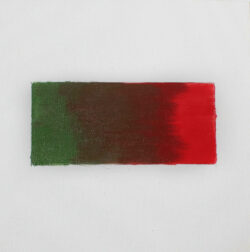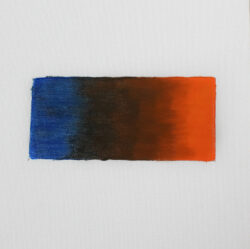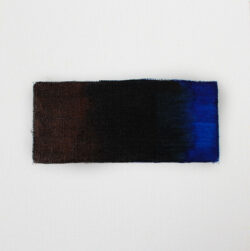Finding your Shadow
April 28, 2021Whether it be shade from trees or a passing cloud, on a bright day shadows can be found everywhere. Use these times to soak up some much needed Vitamin D (with some applied sunscreen of course) and take the time to really look at the shadows around you. If it’s a grey day with no shadow, pull out some sunny photos and look for subjects where the shadows are the main focus of the image. Taking this angle of observation will help tune your eyes to the different shapes and patterns of shadows and how they land on surfaces.

Quinacridone Violet to a Cadmium Yellow
What is the Shadow Shape?
The first thing you need to look at is the shape of the shadow. Shadows can be quite abstract and looking at the negative space (the shape around the subject) will allow your eye to observe this better than trying to draw something familiar.

Cadmium Red into a ChromeOxide Green
What are the Shadow’s qualities?
Depending on the light source and the path this comes from will affect the quality of the shadow; a direct sunlight/light source can cast hard shadows, while a cloudy light source can give off fuzzy and soft shadows. The distance between the subject and the surface will also affect how a shadow lands.
What colours are cast in the shadow?

Cobalt Blue with a Cadmium Orange
As a general rule of thumb, a sunny day will be a warm yellow light – producing a subtle, blue/violet, cool grey shadow. But look a little closer to see the subtle temperature and colour changes. If you decide on a warm light and cool shadow composition stick to that throughout the painting. Pulling a bit of colour theory into the mix here, the shade of a colour is the result of mixing this with its complementary colours and adding a bit of blue to darken it. Observe the colour temperature of the light source. Warm light = cool but muted shadows, cool light = warm but muted shadows. Keep this consistent in the shadow composition of your painting.
Depending on the shadows, consider trying some colour mixing experiment combinations with Opus Essential Colours by adding a pinch of:
- Quinacridone Violet to a Cadmium Yellow, to create an ochre-y like colour.
- Cadmium Red into a ChromeOxide Green.
- Cobalt Blue with a Cadmium Orange.

Ultramarine Blue and Burnt Umber
Last but not least, you can also create your own Chromatic Black for those dark darks by mixing Ultramarine Blue and Burnt Umber. More blue in the mix will give you a cool black. More Burnt Umber will give you a warmish black. A Chromatic Black tends to have more depth than a flat black out of the tube.
When in doubt on the colour combinations, consult your colour wheel.
Watch the Tonal Values.
Judging the tonal value in your shadow observations takes practice! Observe and look to see how light or dark these shadows are. Do they become lighter in value towards the edges and darker in the middle? A Grey Scale & Value Finder is a great tool for helping you identify a mid tone as a starting base when blocking in your cast shadows. It won’t be perfect, but it will give you that start and allows you to judge other colours against and as the painting develops you can refine and add more colour, darken or lighten.
Overall shadows can be tricky, but if you can observe and understand how to capture this, it will make your paintings really believable.
Products to Help Find Your Shadow:
- Books on Colour Mixing and Shadows:



